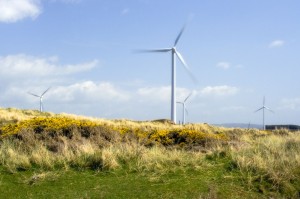 The Cambridge City Council is holding a special meeting on the Climate Emergency at City Hall on Thursday, September 24th at 5:30pm and will be broadcast on Cambridge cable TV channel 8. This proceeds the council passing a policy order resolution recognizing the existence of a climate emergency on May 11, 2009. The resolution obligates the city of Cambridge to lead in responding to Climate Change and to direct the appropriate city departments to increase the City’s responses to a scale proportionate to the emergency and consistent with the city’s own Climate Protection goals for 2010 and beyond. A seven minute clip from the Cambridge city council hearing can be viewed on CCTV.
The Cambridge City Council is holding a special meeting on the Climate Emergency at City Hall on Thursday, September 24th at 5:30pm and will be broadcast on Cambridge cable TV channel 8. This proceeds the council passing a policy order resolution recognizing the existence of a climate emergency on May 11, 2009. The resolution obligates the city of Cambridge to lead in responding to Climate Change and to direct the appropriate city departments to increase the City’s responses to a scale proportionate to the emergency and consistent with the city’s own Climate Protection goals for 2010 and beyond. A seven minute clip from the Cambridge city council hearing can be viewed on CCTV.
The city of Cambridge has taken a proactive role in addressing climate change and in December 2002 it adopted the Climate Protection Plan with the goal of reducing the emission of greenhouse gases (GHG) city-wide 20% below 1990 levels by 2010. Despite the efforts of City staff and others the City has fallen short of this goal. The Climate Emergency Hearing provides the opportunity for experts to weigh in on the current state of climate change and potential ways the city can address the crisis.
Speakers will include Dr. Melanie Fitzpatrick of the Union of Concerned Scientists, Dr. Jill Stein of Physicians for Social Responsibility, Dr. Frank Ackerman of the Stockholm Environmental Institute at Tufts University and Dr. John Sterman of MIT Sloan School of Management. Scientists will discuss the mounting evidence of climate change exceeding the worst-case IPCC (Intergovernmental Panel on Climate Change) scenario projections and the increasing risk of abrupt or irreversible climatic shifts.
For more information see http://greencambridge.wikispaces.com/Calendar+of+Events


 Living in Massachusetts, it is easy to take water for granted with an average rain fall of 45 inches per year. While 2009 might turn out to be an
Living in Massachusetts, it is easy to take water for granted with an average rain fall of 45 inches per year. While 2009 might turn out to be an 





